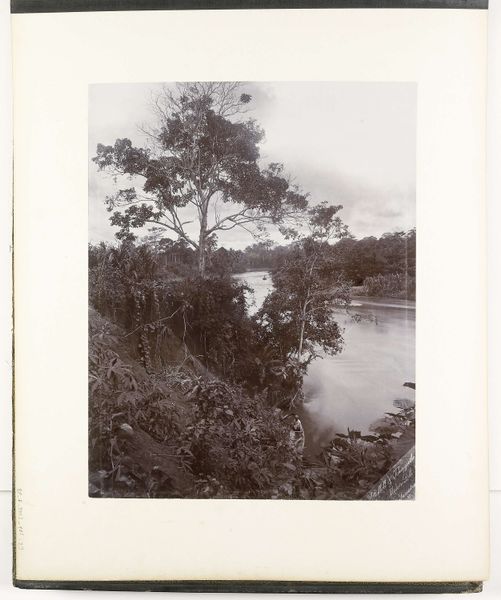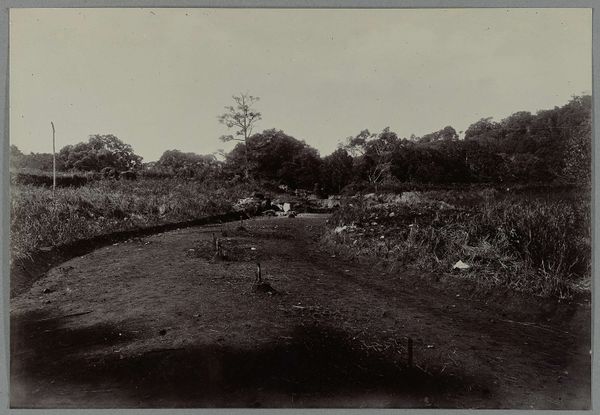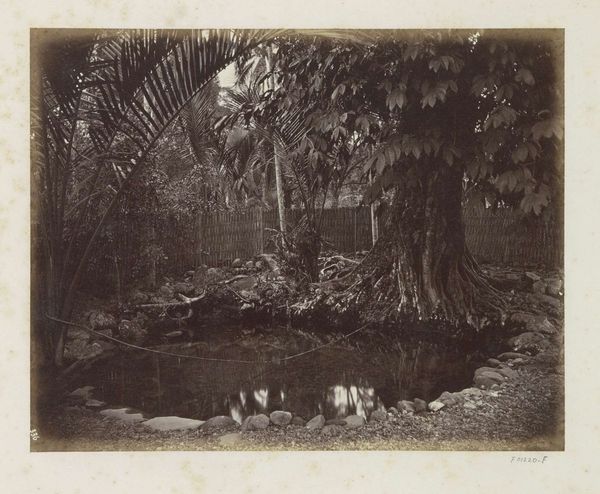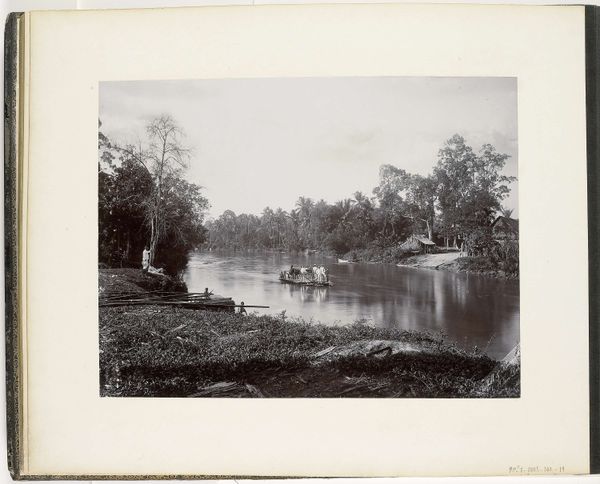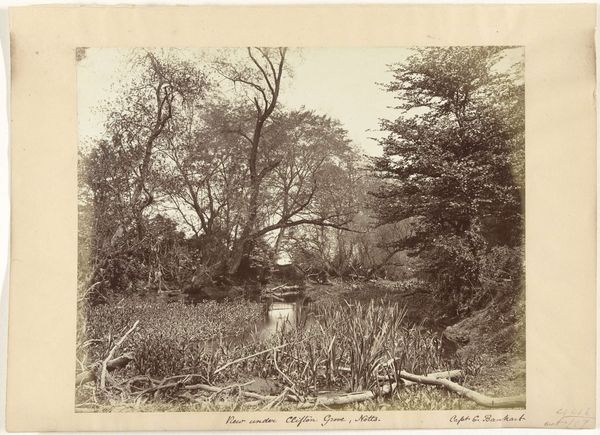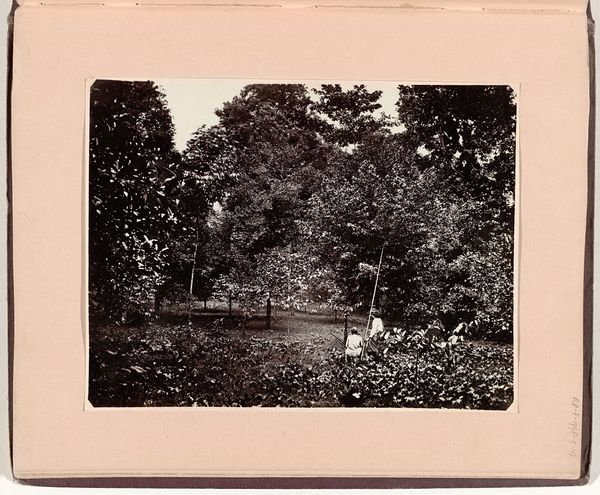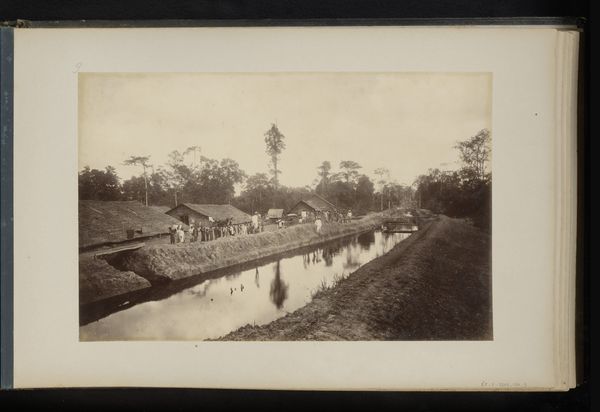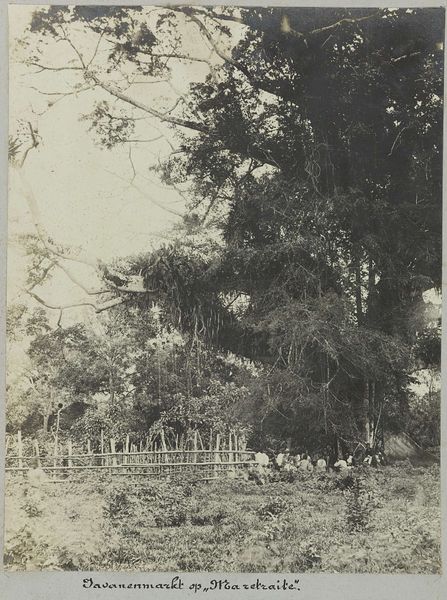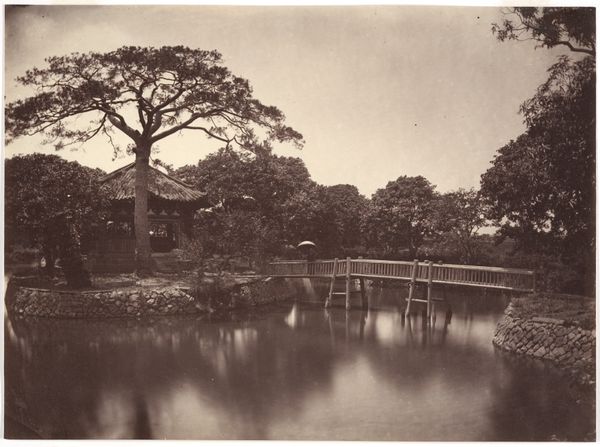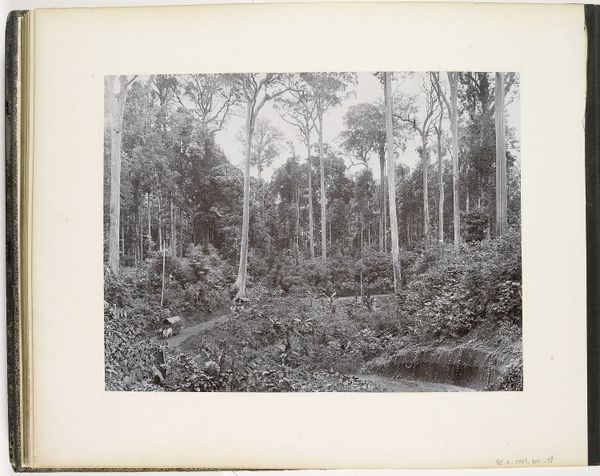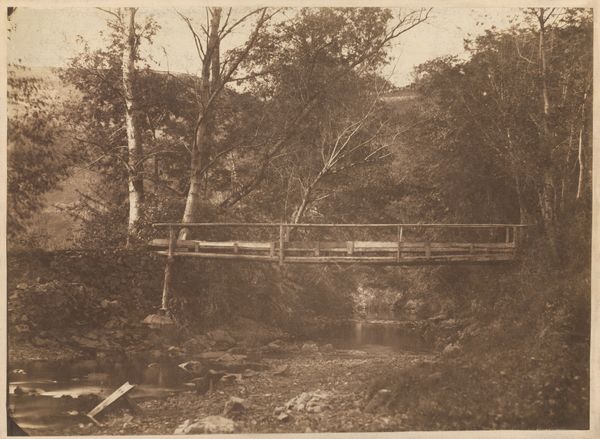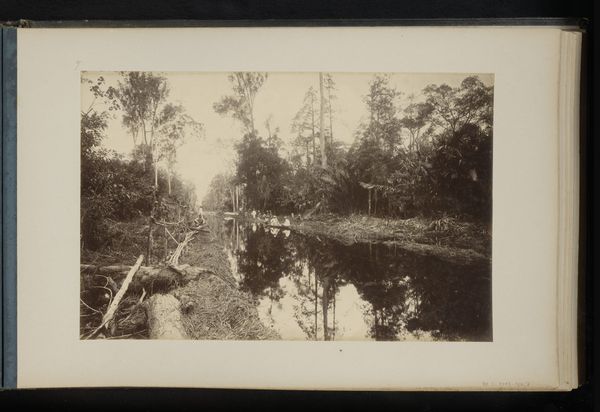
Gezicht op rivier met baggermolen bij Laboe-Dalam, Sumatra (Baggermaschine Laboe Dalam) c. 1885 - 1900
0:00
0:00
photography
#
landscape
#
photography
#
realism
Dimensions: height 266 mm, width 362 mm
Copyright: Rijks Museum: Open Domain
Editor: This photograph, entitled "Gezicht op rivier met baggermolen bij Laboe-Dalam, Sumatra," or "View of a River with a Dredging Mill Near Laboe-Dalam, Sumatra" was taken by Carl J. Kleingrothe sometime between 1885 and 1900. The stark black and white imagery really emphasizes the industry taking place amidst a natural, verdant landscape. What stories do you think are being told through these visual cues? Curator: The photograph operates as a kind of document, capturing a specific moment in the colonial extraction of resources. But notice how the machinery, the "dredging mill," is almost frail, even precarious, nestled within the dense foliage. Doesn't it suggest something about the relationship between man, technology, and the imposing power of nature? The figures working near the water’s edge and tending to the machinery; they are actively re-shaping the land. Editor: That makes me think about labor and its visual representation. Is the photographer making any sort of social commentary here? Curator: It's hard to say definitively without knowing Kleingrothe’s intention. But photographs of this period were often presented as objective documents, carefully constructed to serve particular narratives. Notice how small the laborers are within the larger composition. How does that positioning create a hierarchy, not just of scale but also of importance? It invites us to consider who controls the narrative and whose perspective is centered. Editor: That’s a really thought-provoking point, focusing on perspective. It definitely shifts my initial interpretation of the image as simply a neutral depiction. Curator: Precisely! By delving into these symbols – the machine, the landscape, the positioning of figures – we begin to peel back the layers of cultural memory embedded within the photograph, recognizing the complex relationship between colonizer and colonized, progress and exploitation. Editor: Thanks for shedding light on all of those layers. I'll definitely approach similar images with a more critical eye now.
Comments
No comments
Be the first to comment and join the conversation on the ultimate creative platform.
